Live stones are natives of South Africa. They attract attention with their appearance and unusualness. Externally, these plants are super-compound resemble pebbles of different shapes, colors and values. In room flower growing, several types of living stones are popular. Their botanical features are directly dependent on their range of growth, but they are all combined into a family of aisa and need similar cultivation and care conditions. Consider how to grow live stones at home, how to avoid common mistakes, so that these exotic guests from distant countries are not just grew, but also bloomed on your windowsill.
Live stones, description
The first representative of the aisa family, or the aisoon - Lithopes Keplevoid - was discovered quite by chance by Botany-traveler Barcell in 1811. One day, during a long walk through the deserted terrain of the Big Carrh, he decided to relax and leaned onto the hillside. To his surprise, the scientist noticed the representative of a live flora among the head of pebbles. Outwardly, this plant almost completely resembled pebbles, but was alive. After this incident, Botany began to carefully look closely to the rocky sections of Africa and gradually identified many types of living stones that were combined into a group of succulents.
What is really a plant living stone:
- These are evergreen leafy succulents, which concentrate moisture in a pair of overhead and modified leaves.
- The shape of the leaves is cylindrical or spherical, the structure of the sheet is dense, the color is diverse. The above-ground part of the living stone is the two thickened thickened sheets separated by a shallow furrow. It grows out of it, young leaves grow, and in the rainy season - blooming.
- The size of the living stones is different, but on average no more than 5 cm in the diameter and the same in height.
- Coloring color is the most different. Some family representatives have fragrant flowers. The magnitude of the brethon variable - from 2 to 7 cm.
- Rhizome live stone is a shortened stem that goes into a long rod root, deeply going to the soil.
- The area of \u200b\u200bgrowth is arid regions of Africa. These are the desert regions of Botswana, Namibia, as well as South Africa.
Live stones are distinguished by a specific life cycle, which is directly interrelated with weather conditions. In the period of drought, they are in the period of rest and do not differ much from ordinary stones. When rains starts, the stones "come to life" and lifeless African deserts dress up in bright decorations - white, bright yellow, orange, crimson, pink, motley.
Life cycle of living stones in the natural environment looks like this:
- In the summer, in the dry season, the plants are in a state of complete rest, immersed in the ground.
- With the advent of autumn, living stones are rolling into growth and soon bloom.
- In winter, when the light day is short, and there is little moisture, the stones plants form young leaves. They are inside the old leaves and feed them in moisture and minerals, gradually exhausted them. Closer to the end of the winter, the skin of old leaves is wrinkled, skews.
- In the spring, in the next rainy season, the old leaves die off, and new intensively accumulate moisture and increase in size.
Beautiful views and a variety of live stone
Often found the misconception that the living stones - Lithops it. Well, Lithops really belong to this category of plants, but other than them among the living stones include more than a dozen succulent. This conos, and Frith, and many other plants.
Not all species of living stones are suitable for indoor flower, so we consider only those that can be successfully grown on a window sill or on a balcony.
Living stones Lithops
Let's start with the most common living stones - Lithops. To date, they identified more than 40 species.
- These flowers - living stones with unusual coloring of the leaves, which serves to camouflage them. Color diverse green - gray, chocolate, green, terracotta, cream, blue, patterned.
- The width Lithops to 5 cm in height - not more than 4 cm overground part -. Fleshy two leaf spliced, separated by a gap with a depth of 2-3 mm.
- At home, the flowers from September to October. Flower stays fresh up to two weeks.
Interesting varieties:
Lithops brownish - steam leaves with truncated corners, color beige-brown with a pattern of milk chocolate color. The flowers are quite large, bright lemon color.
Lithops Volka. Greyish-green stone with specks of darker shades, reminiscent of raindrops. Bright expressed slit divides the plant into two disproportionately. Lithops flowers bright yellow color.
Lithops keglevidny. Leaves salmon brown nearly flat-topped brick color, the top planar surround pattern. Flowers maximally large (4-4.5 cm), their color is uneven: the milk at the bottom and coral at the very tips of the petals.
Lithops beautiful. We kind of charming olive green leaves with darker chocolate olive pattern on top. White flowers with golden middle, resembling a daisy.
Lithops Leslie. A pair of wide (4.5 cm), but low (up to 2 cm) leaves with convex vertices. Color striking: on the background of gray-brown foliage leaf adorns the blurred image as a dark olive circles. Flowers pale white with a pleasant aroma.
Lithops marble. The plant is extremely similar to the usual pebble. Its height is about 3 cm, the surface is gray-white to dark gray veined, smooth to the touch. Flowers deplete excellent flavor, white petals, middle, pale yellow. Flower size is 5 cm.
Lithops lozhnousechenny. The variety prefers to grow in large groups. Delicate leaves a gap between the gray-pink color gives the impression of half-open lips. Patterned surface: on the main chaotic background is an image in the form of bruises dark coral color. flower color - dark-golden.
Lithops optical. Leaves purple purple, their height to 2.5 cm. Flowers shallow, recessed in the slot, purplish-white color.
Living Stones, argiroderma
- Argiroderma - unusual succulents from the Karoo desert to escape the heat, buried in the sand.
- In living stones silvery-green succulent leaves, separated by a deep groove that reaches the ground.
- Leafy rosette may be represented by two or four leaves.
- Flower single, white, crimson or golden color, reminiscent of a daisy.
Bright members of the species:
Argiroderma the cup - dwarf with a pair of succulent leaves up to 2 cm in diameter. Leaves poluyaytsevidnye connected only at the base, so reminiscent of the opened bowl. The leaves are light green with thick krapom like poppy seeds. Flower large, reminiscent of bright yellow daisies.
Argiroderma oval - succulent plant with 2-4 leaves of cylindrical shape, their color from lime green to gray-blue. White or lilac flower, to 3 cm.
Argiroderma yaichkovidnaya - from succulent rosette consists of two sheets of a spherical shape, a bluish-gray color with speckles. Flower pale pink, up to 4 cm in diameter.
Living Stones, conophytums
- Conophytums - succulent perennial with an original heart-shaped leaves, merged together.
- Kind of gives numerous thickets of the barrel-shaped smooth leaves that are hard to see among these stones.
- Color leaves - all shades of green, blue, brown, spots may be present.
- The flowers are funnel-shaped, large and bright, milk, orange-yellow or lilac.
The popular types conophytums:
Conophytums biloba. Leaves heart-shaped, somewhat flattened, bluish-green. Yellow flowers, blooming in August.
Conophytums obconical. Green leaves in a dark point. flower coloring - dark yellow. Form part aboveground obconical.
Conophytums Nanum. The leaves are small (6-7 mm), spherical, light green color. The flower is also a fine of up to 1 cm, white color with the tips of light red.
Friedrich conophytums. A pair of conjoined leaves form a heart-shaped "body" green-purple color. Flower-violet color white to 1 cm in diameter.
Conophyteum crimped. Miniature pebbles in the form of pink-green kegs with wax spots of rich green tone. Flowers-tube with elongated thin petals resemble mini palm trees.
Conofithum shrub. The leaves are condensed by three quarters, their coloring is bluish-green. Flowers up to 3 cm in the diameter, the color of the petals is light orange, the middle is yellow.
Conofithum Pelicum. The "body" of the succulent brown-green with dark dots. Pigeon-purple flowers are located on high flowering, 3 cm in diameter.
Conophyteum Caramopans. A pair of leaves forms a green heart with a purple spraying. Flower of elegant purple color with honey dye.
How to grow live stones
Live stones come from hot countries, where heavy rains are replaced by a long drought. Therefore, these plants need special conditions for growing and proper care.
Required conditions for living stones
- Live stones prefer the abundance of the Sun, so the window with southern orientation is suitable for them.
- Since in winter plants rest, with the arrival of spring, they gradually teach them to the light, removing them from the window in the peak of solstice for 3-4 hours.
- If weather conditions cannot provide a lot of sun, plants provide additional lighting.
- During the time of wakefulness, the succulents need air temperature + 23 ... + 30⁰, and when the phase of rest comes - +13 .. + 15⁰С. The minimum permissible temperature is + 5⁰С.
- The humidity of the air has no fundamental importance, the main thing is that the air is not stored in the room.
Solid stones
That soil in which they transport and sell live stones (as a rule, it is a peat), it is not categorically suitable for these plants, so after buying them immediately transplanted.
Live stones are transplanted in low pots (up to 7 cm) with good drainage. The soil is made from one part of the mixture for succulents, two pieces of perlite, two parts of the sand. It is important to take into account that living stones do not tolerate lime soil.
How to grow a live stone from seeds
Live stones preferably determine the seed method. But for obtaining seeds, the flower permeates cross-pollination - in captivity, the living stones do not multiply on their own.
After successful pollination on the plant there will appear. He is not followed to touch until the appearance of new leaves. Then it is cut and placed in a dark place for 6 months. After that, microscopic seeds extract from the fetus. Or it is possible to facilitate and speed up the process of growing living stones - buy seeds in the store.
Seeding seeds so:
- Flat pots in the form of a plate with a depth of 6-7 cm and holes for the outflow of water are filled with a prepared mixture. Pot and land must be disreamed in any available way.
- The surface of the earth is smoothed, the pre-wet seeds with an interval of 3 mm are folded on top. Then they sprinkle them with sand (layer thickness of 1 mm).
- Capacity is immersed in water so that the soil moistened. Then the film shelter is built, and leave the container in heat, where the temperature is + 24 ... + 30⁰ C.
- Daily guards open for 4 minutes.
- Shoots are glorified for 8-10 days.
Live stones, seeding
After the first winter, seedlings are searched:
- Seedlings are removed from the previous capacity, their roots are painted and deepen into a new substrate.
- The soil use the same, but additionally bring the soil superphosphate 10 g / 3 l.
- The pots are covered with a film and gradually begin to shoot it for a couple of minutes a day. So they teach the plant to the outdoor air during the month.
- Watering is carried out very rarely when the soil fully enhances until the bottom.
- Then the guy is cleaned, but a few weeks restors the plant from straight light.
- A year later, they again carry out a transplant, and then provide usual care as adult succulent.
How to care for live stone
You will need strict watering, moderate fertilizer and the creation of suitable conditions in accordance with the life cycle.
Watering alive stones
Plants need a meager watering: overflowing very quickly ruins live stones.
- From April to September, the Vazone is watered every two weeks, very moderately. From October to December, watered once a month. During the rest of the time (December-April), watering is prohibited.
- During the bootonization period, watering is suspended until the buds are dissolved, watering continues along the usual scheme.
- Vases are watered with watering can or syringe to exclude water from entering the gap.
- Using only the resistant and soft water. Fluorine and chlorine destructive effect on the plant.
Fertilizing live stones
This type of succulents can do without feeding at all. Only copies that have not transplanted more than 7 years, fertilize once a month in the summer with complex mixtures for succulents.
Landing Rules Live Stones
- Live stones love to grow groups - alone they begin to "miss" and grow poorly. They can be planted together with relatives or other types of succulents and cacti. Such a company contributes to more active blossom of live pebbles.
- The transplant of living stones spend only early spring when new leaves are just starting to grow. It is not necessary to transplant plants annually, to optimally hold transplants every 5 years.
- You can plant live stones in purchased Gurt for succulents. But it will have to add perlite and sand. Or prepare soil yourself. It is necessary to take part of the humor, two parts of the torque brick, three parts of large sand, two pieces of turf. For soil, sifted and heated in the oven components are used.
- Plant transplanted very carefully, trying not to damage the fragile root rod. Therefore, the transplant is carried out along with an earthy room. If crystals are detected at the radiation on the roots, they are removed by swelling in water with a small addition of citric acid.
Diseases and pests of living stone
Live stones are solely in winter. Most often such problems arise:
Live stones, photos
Group landings of lithopes, confusion and other succulents will help create a real garden of stones on your windowsill, which will flourish with the arrival of cool autumn days.

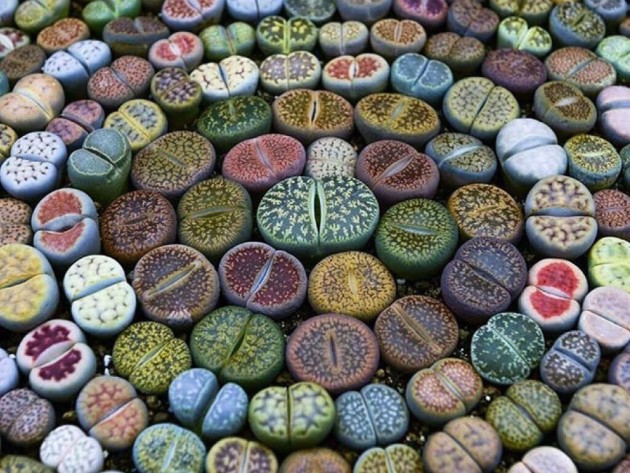

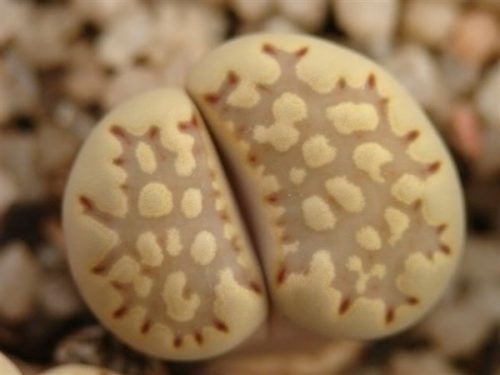
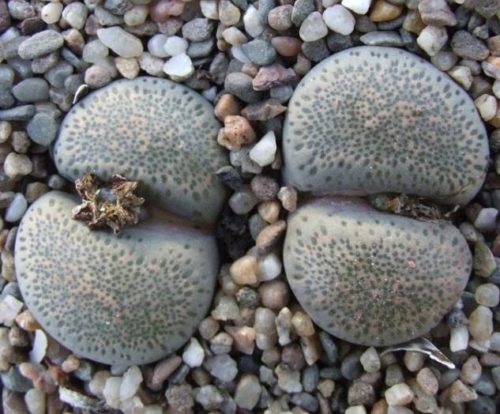

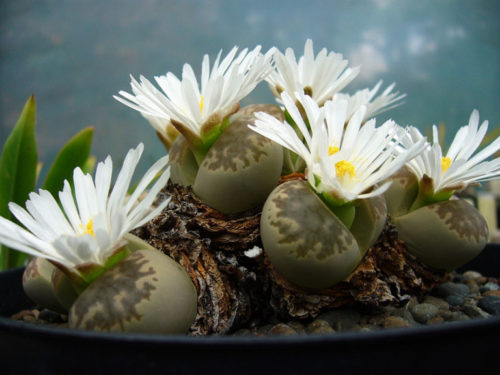
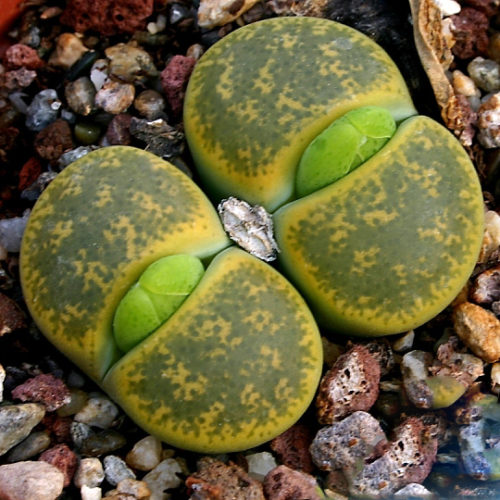
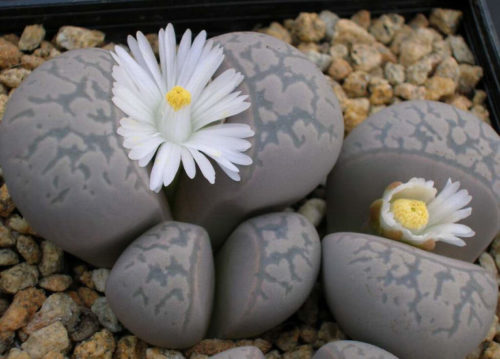
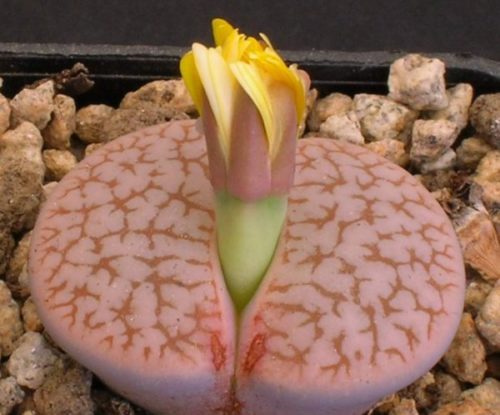
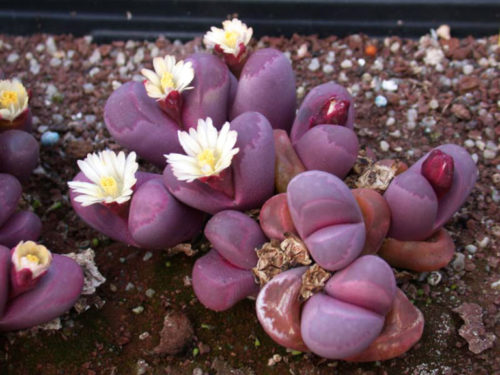
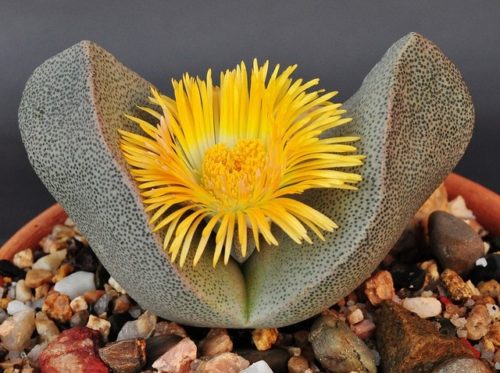
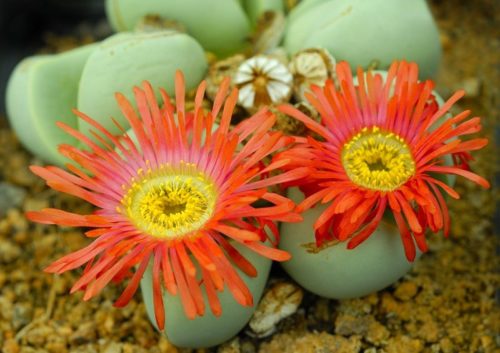
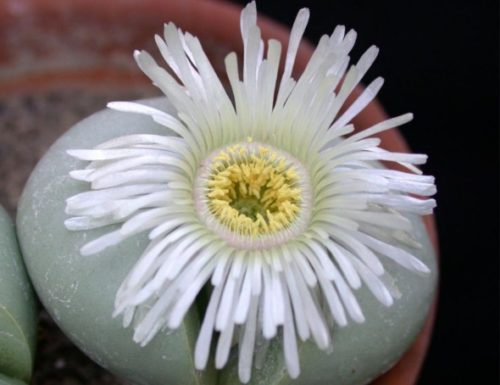
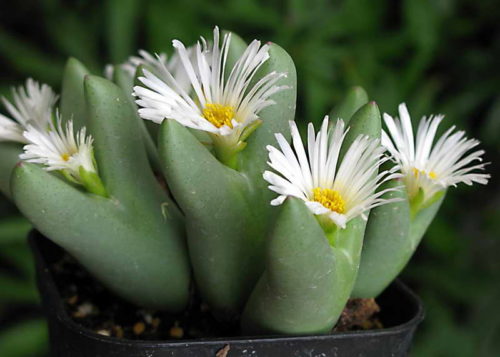
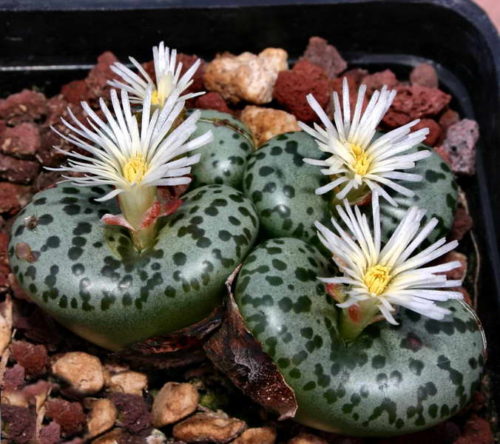
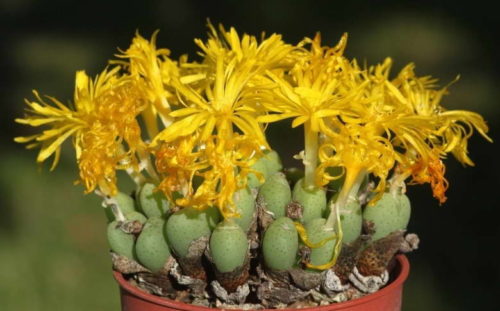
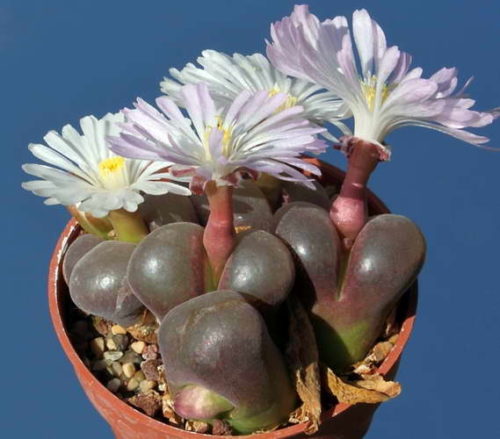
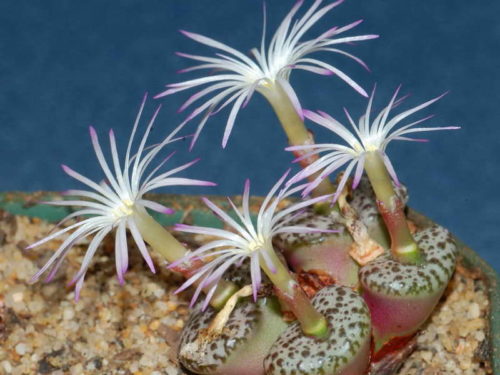
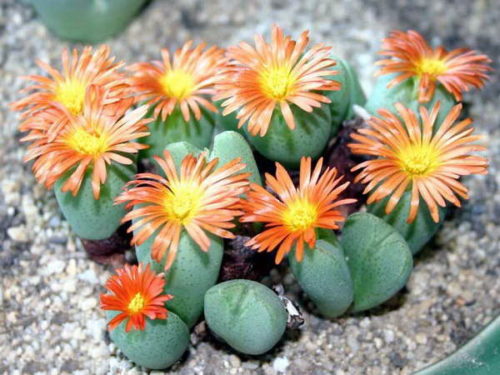
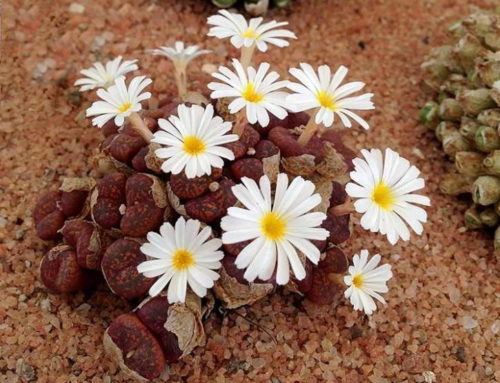
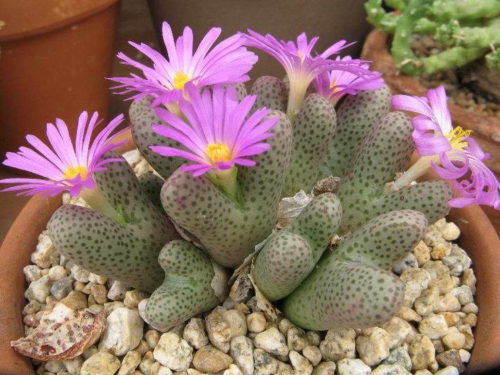
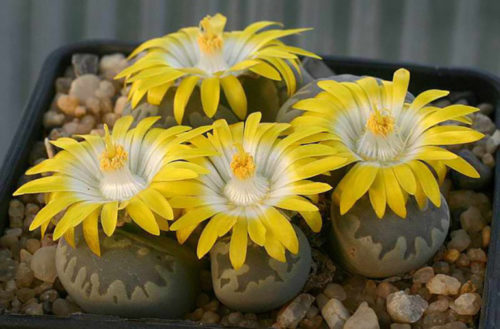
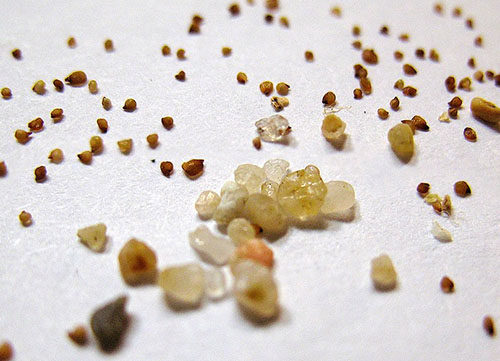
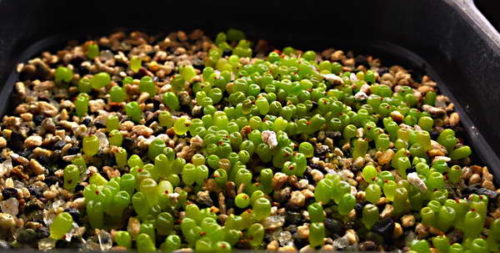
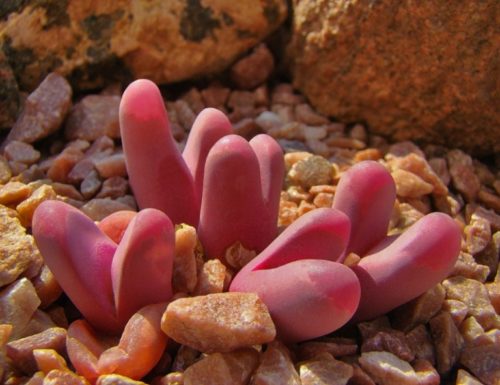
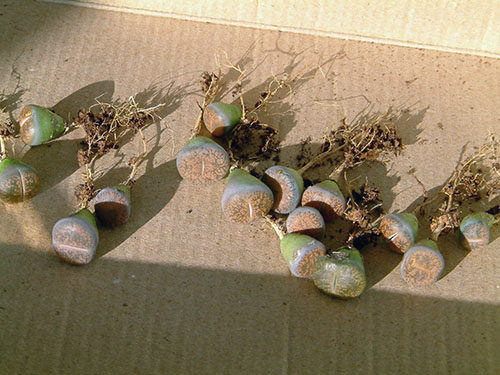



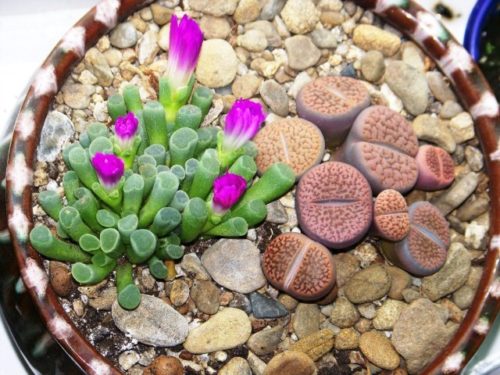
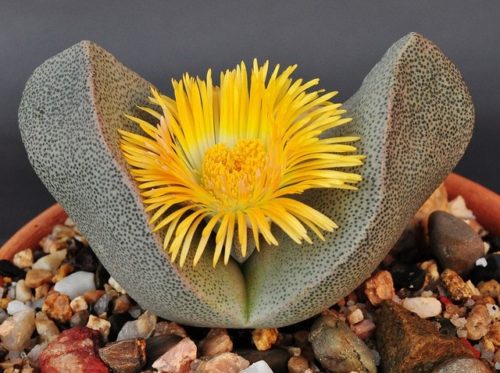
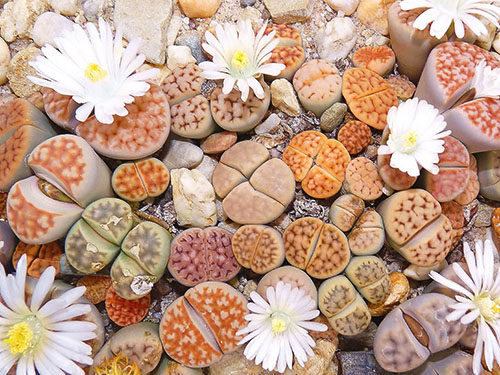
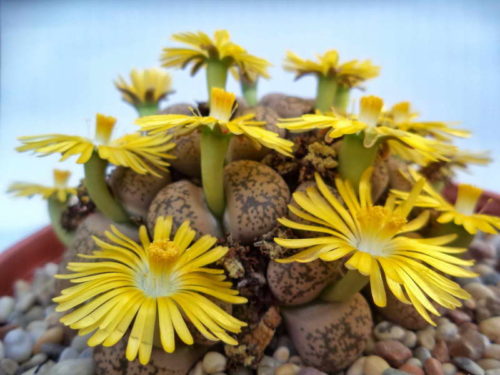












 Start a discussion ...
Start a discussion ...